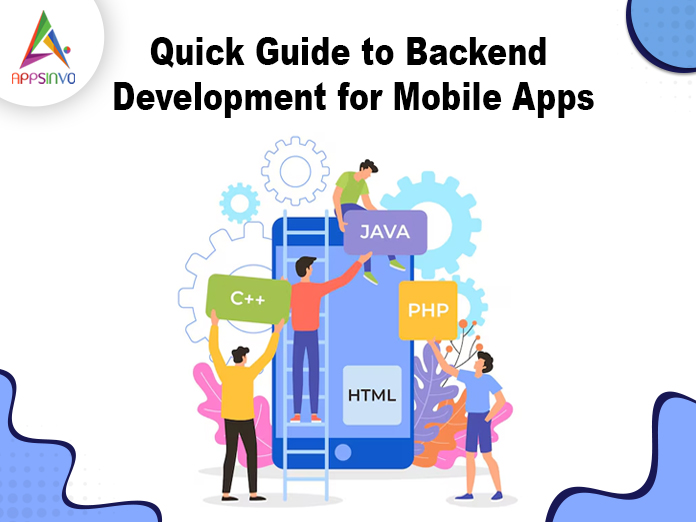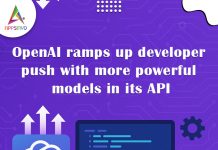Backend development is a critical component of mobile app development, acting as the foundation for the app’s functioning. It entails server-side programming, database management, and API integration to provide seamless communication between the app and the server. This article covers backend development, its components, and recommended practices to build powerful mobile applications.
What is backend development?
Backend development refers to the server-side of an application, where all data processing and business logic take place. Writing server-side code, managing databases, and processing mobile app applications are all part of the process. The backend interacts with the frontend (the user interface) to provide data and functionality to users.
Key Components of Backend Development
- Server: The server is a powerful computer that runs the backend program, stores the database, and handles client requests. It evaluates incoming queries and returns responses to the mobile app.
- Database: Databases hold and handle data for the app. Common types include:
- SQL Database: Structured data can be stored in databases such as MySQL and PostgreSQL.
- NoSQL Databases: Such as MongoDB and Firebase, which are appropriate for unstructured or semi-structured data.
3. API (application programming interface): APIs provide communication between the mobile app and the backend server. RESTful APIs are widely utilized because of their simplicity and scalability.
4. Business logic: This contains the rules and algorithms that govern how data is processed and the app operates. It’s built into the server-side code.
Choosing the Right Tech Stack
Choosing the right technology stack is critical for backend development. Here are a few popular choices:
Programming Languages:
- Node.js: Excellent for developing scalable applications in JavaScript.
- Python: It is known for its ease of use and readability, making it suitable for rapid development.
- Java: A reliable option for enterprise-level applications.
- Ruby: Used in conjunction with the Ruby on Rails framework to facilitate rapid development.
Frameworks:
- Express.js: A simple and adaptable Node.js framework for developing web apps.
- Django: A high-level Python framework for quick development.
- Spring Boot: A Java framework for developing production-ready apps.
Databases:
- MySQL: A widely used relational database management system.
- MongoDB: A NoSQL database that stores data in an adaptable, JSON-like format.
Setting Up the Backend Environment.
- Choose a Hosting Service: Cloud services like AWS, Google Cloud, and Heroku provide scalability and flexibility.
- Set up the Server: Configure the server environment, which includes operating systems (Linux is recommended) and web servers (such as Nginx or Apache).
- Install necessary software: Install programming languages, frameworks, and database administration systems as appropriate for your technology stack.
- Version control: Git version control allows you to track changes in your source code and interact with other developers.
Building the backend
- Define the data model: Build the database schema, which includes tables, columns, and relationships. This step is critical to data integrity.
- Implement API endpoints: Create RESTful API endpoints that enable the mobile app to conduct CRUD (Create, Read, Update, and Delete) activities. Ensure that endpoints are clearly documented.
- Business logic implementation: Create the server-side logic for handling requests, processing data, and communicating with the database.
- Security Measures: To secure sensitive information, use security features like as authentication (OAuth or JWT) and data encryption.
- Testing: Thorough testing, including unit tests, integration tests, and load tests, is required to guarantee that the backend performs properly.
Best Practices for Backend Development
- Scalability: Design your backend to handle increased loads. Use load balancers and consider microservices architecture for better scalability.
- Performance Optimization: Optimize database queries and use caching mechanisms (like Redis) to improve response times.
- Monitoring and logging: Set up monitoring tools to track performance and log errors. This aids in spotting problems and ensuring uptime.
- Documentation: Keep your code and API fully documented. This benefits in the onboarding of new developers and in future maintenance.
- Regular updates: Keep current with the latest technologies and security procedures. To avoid vulnerabilities, ensure that libraries and frameworks are regularly updated.
Conclusion
Backend development is an essential part of mobile app development, ensuring functionality, efficiency, and security. Developers may create solid backend systems that improve user experience by understanding the important components, selecting the appropriate technology stack, and adhering to best practices.
Appsinvo specialises at developing custom backend solutions that are suited to the specific needs of your mobile applications. Whether you’re launching a new project or improving an old one, our knowledge will help you win in the competitive app landscape.












